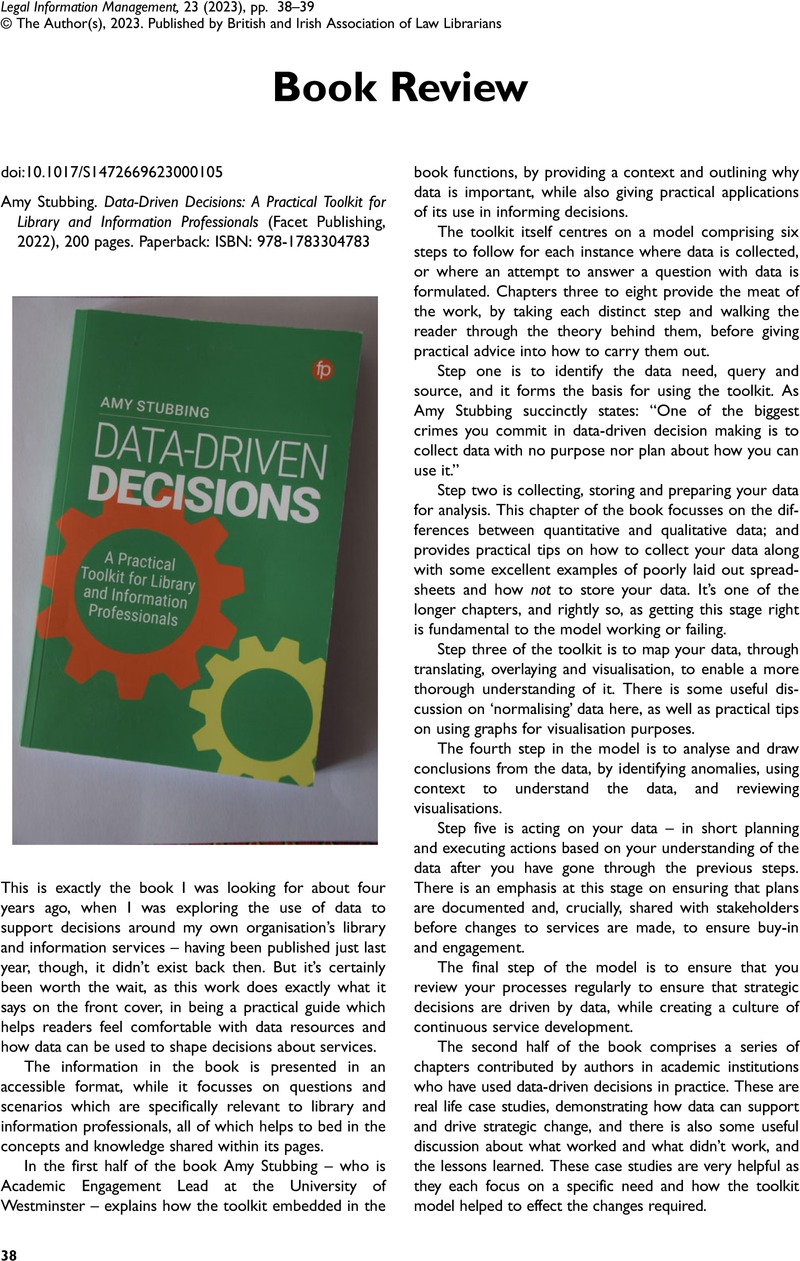No CrossRef data available.
Article contents
Amy Stubbing. Data-Driven Decisions: A Practical Toolkit for Library and Information Professionals (Facet Publishing, 2022), 200 pages. Paperback: ISBN: 978-1783304783
Review products
Amy Stubbing. Data-Driven Decisions: A Practical Toolkit for Library and Information Professionals (Facet Publishing, 2022), 200 pages. Paperback: ISBN: 978-1783304783
Published online by Cambridge University Press: 18 May 2023
Abstract
An abstract is not available for this content so a preview has been provided. Please use the Get access link above for information on how to access this content.

- Type
- Book Review
- Information
- Copyright
- Copyright © The Author(s), 2023. Published by British and Irish Association of Law Librarians


